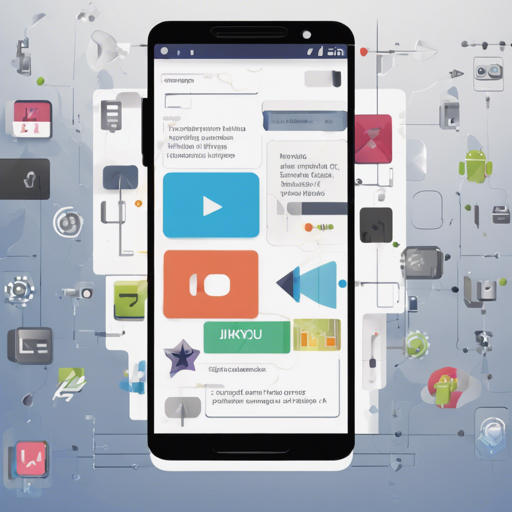If you’re looking to incorporate high-performance video playback into your Android application, using ijkPlayer is a fantastic choice. This guide will walk you through the essential steps to set it up effectively and troubleshoot common issues. Along the way, we’ll use a relatable analogy to help clarify the code’s purpose. Let’s dive in!
Step 1: Setting Up Your Permissions
Before integrating ijkPlayer, ensure you have the right permissions in your AndroidManifest.xml file. Think of these permissions as the “entry tickets” that your app needs to access the video content on the internet and the device’s storage.
<uses-permission android:name="android.permission.INTERNET"/>
<uses-permission android:name="android.permission.WRITE_EXTERNAL_STORAGE"/>
<uses-permission android:name="android.permission.READ_EXTERNAL_STORAGE"/>Step 2: Implementing ijkPlayer
With the required permissions in place, it’s time to implement ijkPlayer. Here’s where the analogy comes into play: imagine your video player as a well-oiled machine in a factory. To keep the machine running smoothly, it needs a few vital components and instructions.
Below is a summary of the main components:
- MediaPlayerTool: The engine that powers your playback.
- VideoListener: The factory supervisor that monitors the machine’s operations.
- TextureView: The display screen that showcases the final product—your video.
Your implementation might look something like this:
mMediaPlayerTool = MediaPlayerTool.getInstance();
// Load libraries and initialize the player
IjkMediaPlayer.loadLibrariesOnce(null);
IjkMediaPlayer.native_profileBegin("libijkplayer.so");Step 3: Playing the Video
Once you have the components set up, you can start the playback. The playVideoByPosition method is your ‘play’ button that gets the video rolling. It’s where you tell the machine what video to play and when!
private void playVideoByPosition(int position) {
final MainAdapter.MyViewHolder vh = (MainAdapter.MyViewHolder) rv_video.findViewHolderForAdapterPosition(position);
if (vh == null) return;
String videoUrl = dataList.get(position).getVideoUrl();
mMediaPlayerTool.setDataSource(videoUrl);
mMediaPlayerTool.prepare();Troubleshooting Common Issues
Even the best machines can run into hiccups. Here are some common issues you might face and how to troubleshoot them:
- Video Not Playing: Ensure you have the correct video URL and that the permissions are properly set.
- Buffering Issues: Check your internet connection. If slow, you might need to implement caching strategies.
- Application Crashes: Look for NullPointerExceptions or ensure that the video file exists locally if you’re trying to play offline.
For more insights, updates, or to collaborate on AI development projects, stay connected with fxis.ai.
Final Thoughts
Implementing ijkPlayer can significantly enhance your application’s video playback capabilities. Just remember, keeping your machine well-oiled (by handling exceptions properly) will prevent most common issues. At fxis.ai, we believe that such advancements are crucial for the future of AI, as they enable more comprehensive and effective solutions. Our team is continually exploring new methodologies to push the envelope in artificial intelligence, ensuring that our clients benefit from the latest technological innovations.

